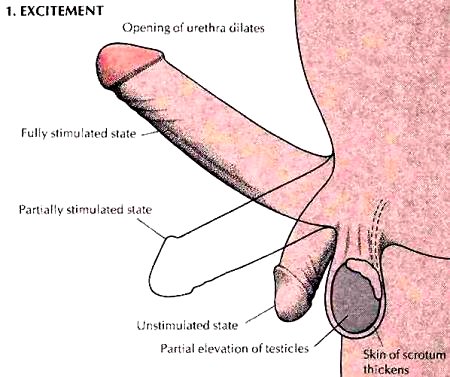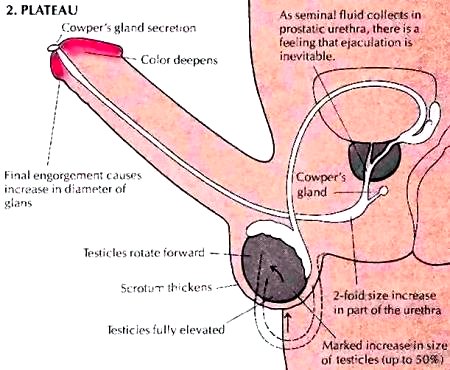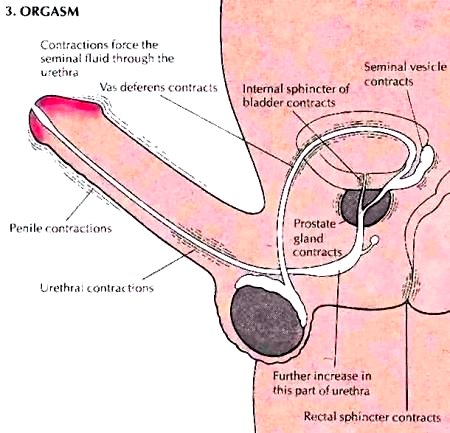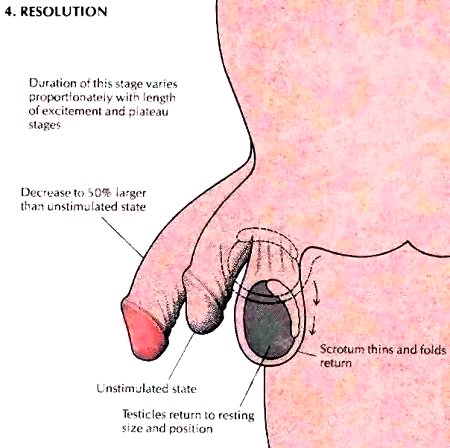|
THE SEXUAL RESPONSE IN MALES
In modern times, the sexual response cycle was first analyzed and described by Albert Moll, who also proposed its division into four major phases: 1. the onset of voluptuousness, 2. the equable voluptuous sensation, 3. the voluptuous acme, and 4. the sudden decline (A, Moll, The Sexual Life of the Child, 1909). Wilhelm Reich, in a later book, offered a different description: 1. mechanical tension, 2, bio-electric charge, 3. bio-electric discharge, and 4. mechanical relaxation (W. Reich, The Function of the Orgasm [1927] 1942).
More recently, Masters and Johnson have relabeled these phases as 1. excitement, 2. plateau, 3. orgasm, and 4. resolution. In addition, they have introduced the concept of a fifth phase, the refractory period.
Shown here is the sexual response in the male sex organs as described by Masters and Johnson. It must be remembered, however, that the response actually involves the whole body. (For details see preceding text.)
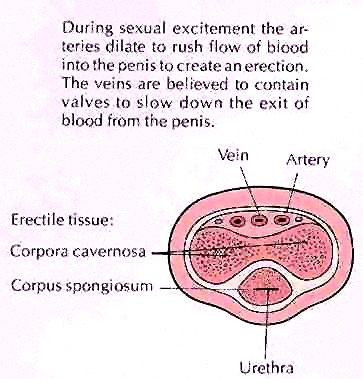 |
During sexual excitement the arteries dilate to rush flow of blood into the penis to create an erection. The veins are believed to contain valves to slow down the exit of blood from the penis.
Erectile tissue: Corpora cavernosa Corpus spongiosum
1. EXCITEMENT
2. PLATEAU
3. ORGASM
4. RESOLUTION
(5. REFRACTORY PERIOD)
After orgasm, there is a period in which males do not respond to new sexual stimulation, This so-called refractory period may be rather short in young males, but usually becomes longer with advancing age.
|


